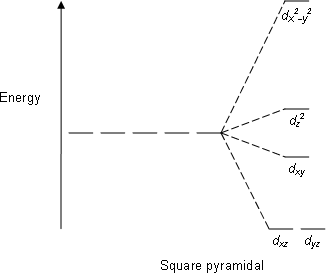Which of the following coordination compounds have geometric isomers?
- Square Planar:
#Pt(NH_3)_2Cl_2#
- Square Planar:
#Cu(NH_3)_3Cl#
- Octahedral:
#Ni(NH_3)_3Cl_3^-#
- Octahedral:
#Co(NH_3)_5Cl_2^+#
- Square Planar:
#Pt(NH_3)_2Cl_2# - Square Planar:
#Cu(NH_3)_3Cl# - Octahedral:
#Ni(NH_3)_3Cl_3^-# - Octahedral:
#Co(NH_3)_5Cl_2^+#
1 Answer
Your second and fourth compounds... they don't exist.
(1)
- Platinum does form square planar complexes, so this is real.
- Since it has two equivalents for each of two different species, this can have cis/trans isomers, i.e. geometric isomers.
Therefore, diamminedichloroplatinum(II) has geometric isomers.
(3)
This looks real.
-
#"Ni"^(2+)# has a common coordination number of#6# , and along with the three#"Cl"^(-)# ligands, the total charge is#-1# . -
This is an
#Ma_3b_3# octahedral complex, so it can have two isomers only: fac and mer. Refer to this answer for more information. -
fac and mer isomers are actually diastereomers, which are a subset of geometric isomers (at least, according to this website!).
So, they count as geometric isomers, and triamminetrichloronickel(II) has a fac and mer geometric isomer.
(2)
I don't think your second compound is correct.

However,
Indeed, the common coordination number for
Oh yeah, and your compound probably doesn't exist either.
(4)
This compound is not real either.
However,
The trans isomer would have axial

